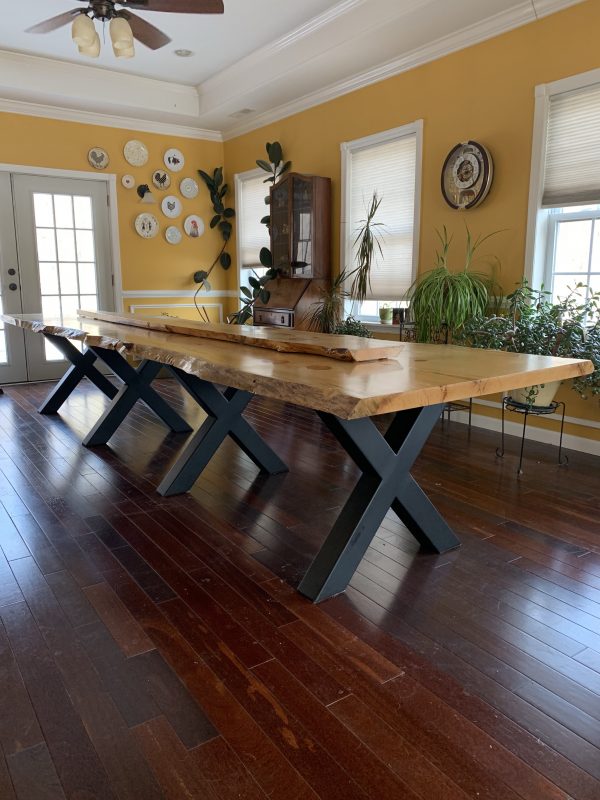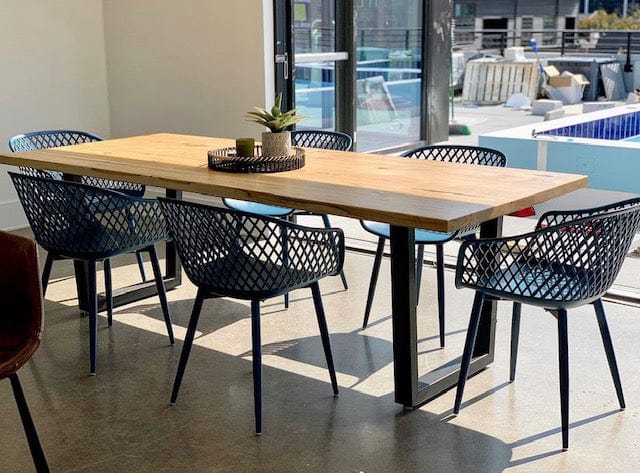Creative Ideas for Replacing or Refurbishing Your Dining Room Table Legs
Creative Ideas for Replacing or Refurbishing Your Dining Room Table Legs
Blog Article
Professional Tips for Installing Dining Room Table Legs for Optimum Stability
When it concerns installing eating room table legs, achieving optimum stability is paramount for both capability and aesthetics. The procedure begins with picking the ideal materials and equipment, followed by thorough positioning and consideration of weight circulation. Each step plays an essential role in ensuring that the ended up product holds up against everyday usage without compromising safety and security or design honesty. However, recognizing the nuances of these components can substantially affect the general end result. What specific methods can improve stability even additionally?
Pick the Right Legs
When selecting the suitable legs for your dining-room table, it is necessary to take into consideration both functionality and looks. The legs you choose will substantially influence the total design and stability of the table. Assess the table's intended use; if you expect frequent celebrations, tougher legs, such as those made from solid wood or metal, may be more suitable, as they offer enhanced sturdiness and support.
Typical eating tables usually range from 28 to 30 inches in elevation, so make sure the legs align with this criterion for comfort. Conical legs can include a contemporary touch, while transformed legs might share a much more classic visual.

Select Appropriate Equipment
Exactly how can the appropriate hardware improve the security and longevity of your dining area table? The selection of proper equipment is important to guaranteeing that the legs of your table are safely affixed and able to endure normal usage. Top notch screws, screws, and brackets offer the essential strength to support the weight of the table, in addition to any type of added loads placed upon it throughout gatherings or meals.
When selecting screws, choose for those made from sturdy materials such as stainless steel or brass, which withstand rust and keep honesty over time. The length of the screws is equally essential; they must pass through deeply right into the table's framework without compromising integrity. For bolted connections, think about utilizing lock washing machines to avoid loosening up as a result of vibration or motion.
Additionally, utilizing corner brackets can include additional support, especially for bigger tables or those with larger tops. These braces distribute weight evenly and help maintain the table's shape. Ensuring that the equipment you select is appropriate for the specific products of your table will certainly even more enhance its general security and longevity, allowing you to appreciate your dining experience for years ahead.
Ensure Appropriate Alignment
Appropriate alignment of dining area table legs is important for both aesthetic allure and functional security. To achieve ideal placement, begin by determining the range from the table's corners to the leg accessory factors.
Utilize a level throughout installment to verify that each leg is perpendicular to the table top. This action is essential, as also small discrepancies can intensify right into significant stability problems with time. It is advisable to mark the preferred leg placements on the bottom of the table with a pencil or concealing tape before safeguarding them. This technique serves as a visual guide, enabling changes as required.
Furthermore, double-check the alignment after the initial screws are tightened, as adjustments may be required before completely safeguarding the hardware. By prioritizing proper positioning, you not just enhance the table's total style however additionally make certain that it continues to be useful and secure for several years ahead.

Take Into Consideration Weight Circulation
After guaranteeing proper alignment of the dining-room table legs, it is essential to take into consideration weight distribution to enhance security and performance. dining room table legs. Proper weight circulation is important in avoiding tottering and making sure that the table can support its desired tons without threat of tipping or breaking down
When positioning the legs, guarantee they are placed at equivalent distances from the facility of the table to evenly disperse the weight throughout the structure. Consider the weight of the tabletop and any kind of products that will regularly hinge on it, such as tabletop appliances or attractive pieces. Tables with much heavier surface areas ought to preferably have legs located closer to the corners, blog as this maximizes the base of support and decreases the risk of instability.
Furthermore, if the table is meant for usage in a high-traffic why not try these out location, consider utilizing larger materials for the legs or including stabilizing aspects, such as cross-bracing or a lower shelf - dining room table legs. These modifications can help preserve equilibrium and prevent moving throughout usage. Ultimately, a well-considered weight circulation approach will considerably boost the table's total performance, ensuring it stays a appealing and practical focal point for your eating room
Test Stability Before Use
Examining the security of the dining room table prior to usage is a critical step that should not be overlooked. If the table reveals instability, identify the legs or joints that might need modification.
Following, inspect that all screws and bolts are tightened effectively. Loosened connections can lead to instability and possible damages in time. If necessary, make use of timber glue on joints to boost security, making sure to allow ample drying out time.

Verdict
In final thought, the installment of dining-room table legs requires cautious consideration of products, weight, equipment, and alignment circulation to achieve optimum security. By selecting high-quality fasteners and strong legs, ensuring accurate positioning, and dispersing weight equally, the structural integrity of the table can be substantially boosted. Conducting a stability test prior to routine usage better guarantees that the table will stand up to day-to-day stress, therefore providing a risk-free and trustworthy eating experience.
When it comes to mounting eating space table legs, attaining optimum security is vital for both performance and appearances. The legs you pick will significantly influence the total layout and security of the table next page (dining room table legs). Common eating tables normally vary from 28 to 30 inches in height, so guarantee the legs align with this standard for convenience.Correct placement of eating space table legs is important for both aesthetic allure and useful security.In final thought, the installation of eating space table legs requires mindful consideration of materials, weight, placement, and equipment circulation to accomplish maximum security
Report this page